Patient hoist slings are specifically designed to safely lift and move people who have difficulty moving themselves. They are used in hospitals, nursing homes, and other healthcare settings to assist with transfers, repositioning, and mobility.
For advice or to arrange an assessment
Buy a simple sling
Patient hoist slings come in many forms to fit the needs of individual patients - as will be will be discussed in more detail, below.
The nature of every sling will be determined by its four main properties:
1. Fixing - how it's attached to the hoist
2. Shape
3. Size
4. Material
Clip Fixing
Slings can be classified according to how they fix to the hoist: Clip Fixing or Loop Fixing
Clip fixing slings have a safety "Click-on Click-off" action, which ensures that a physical click is heard as the sling is attached to the spreader bar. Moving parts are internal to the sling for greater durability. This type of sling is common in a hospital setting.
Loop fixing slings are compatible with 'coat hanger' hoists and are the most popular type in general use. They come with multiple, colour-coded, loops of differing lengths, which provides greater flexibility for positioning.
Loop Fixing
The shape of the sling is determined by the purpose of the sling eg general purpose slings, hammock slings, amputee slings, toilet access slings etc (see below for more detail).
Obviously people will vary in their size and proportions and therefore even standard slings will usually come in a range of different sizes. Paediatric and bariatric slings will cater for extremes in size, but in some cases the user's proportions or posture will be unusual and then tailor-made (bespoke) slings may need to be prescribed.
The right choice of material can be crucial. For instance, in situ slings, which will be in contact with the patient for long periods, have to be made of 'breathable' material; while the material of bariatric slings have higher weight limits.
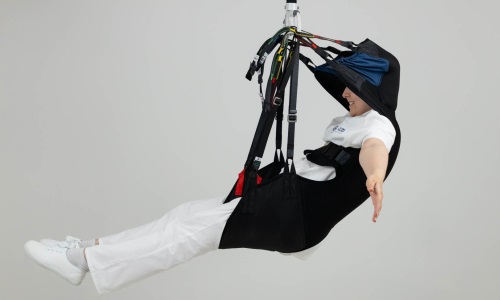
The Tinkham Sling is shaped to provide addtional support for patients who have difficulty maintaining body control
Slings for specific user needs can be designed by specifying the right combination of fixing, shape, size and material according to how they are to be used.
These provide support for the body and legs (and, if specified, the head). They are suitable for patients with limited mobility who require full support during transfers.
Our range includes a variety of designs with different fixings, shapes, sizes and material, each suited to specific users. For instance, the 'Fastfit' is an excellent, value sling which is ideal for compliant users with symmetrical body shapes.
Other slings have fabric that provides different stiffness or are suited to patients with less head control, a tendency to move around in the sling or particular body shapes.
Silvalea has designed a range of 'Deluxe' slings with leg sections that are shaped to enclose the legs providing more support and comfort as well as helping with more restless patients
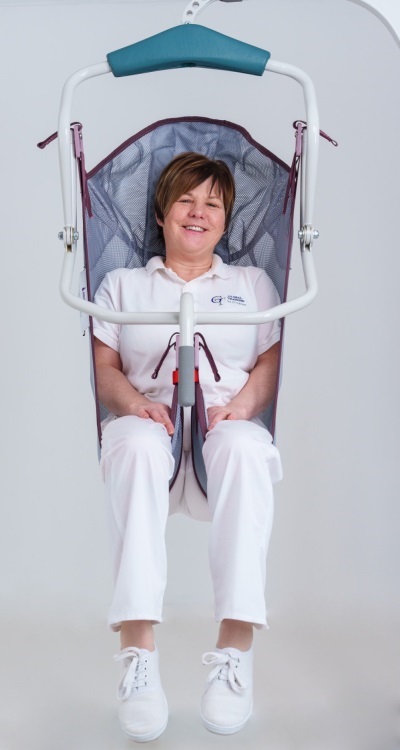
High Easy Sling Mesh with CLIP Fixing
In-situ slings are a particular type of general purpose slings which are designed to be left in place for long periods after the patient has been moved to a chair or wheelchair.
In-situ slings must be designed to minimise any pressure from the slings, for instance by having recessed seams. Additionally, the material must be breathable to reduce the risk of skin damage.
In 1993 Silvalea were the first to introduce the concept of in-situ slings into the United Kingdom and subsequent developed Silva-Superfine fabric specifically for in-situ use.
Our range of general purpose In-situ slings include both a straight-leg and deluxe leg configurations.
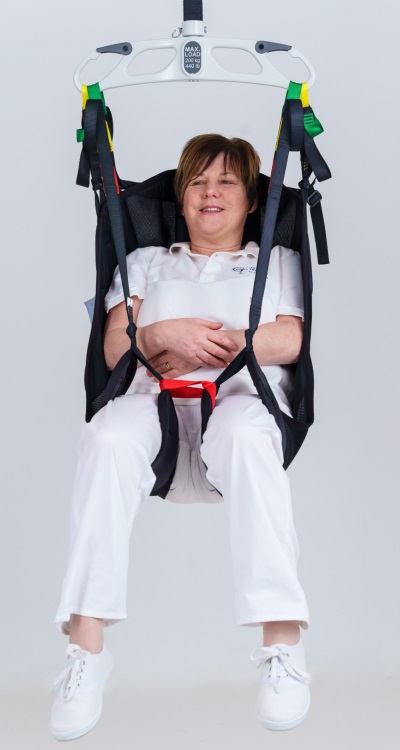
In-Situ Deluxe Leg Sling with LOOP Fixing
 CROPPED 400x300.jpg)
Hammock slings are shaped like a hammock and provide closed leg full body support for the head, neck, and back on transfer. They are suitable for patients with limited mobility who require support in these areas.
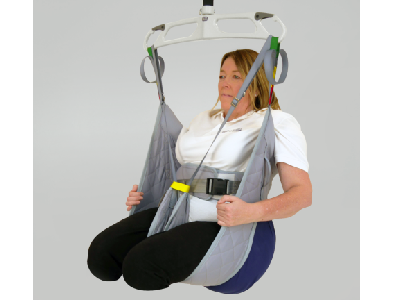
Amputee slings can be designed for use following single or bilateral amputations.
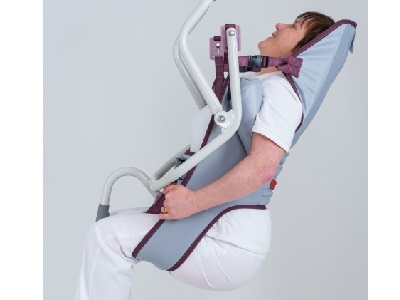
Toilet access slings help with toileting and are designed with extra access for hygiene purposes. In general, good upper body tone is required.
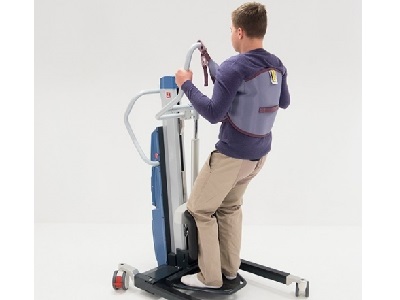
Standing slings for standing aids or standing hoists: these are designed to lift patients in a standing position. They are often used for patients who can bear weight but require assistance with balance and stability.
 CROPPPED 400 x 300.jpg)
Paediatric slings are in available in a number of shapes and sizes according to the needs of the child.
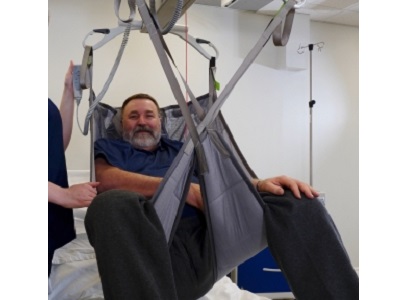
Bariatric slings have a higher upper weight limit, which requires the use of appropriate materials. Obviously they will be larger than standard slings but they are also designed to suit the different body proportions of the larger users. Learn More
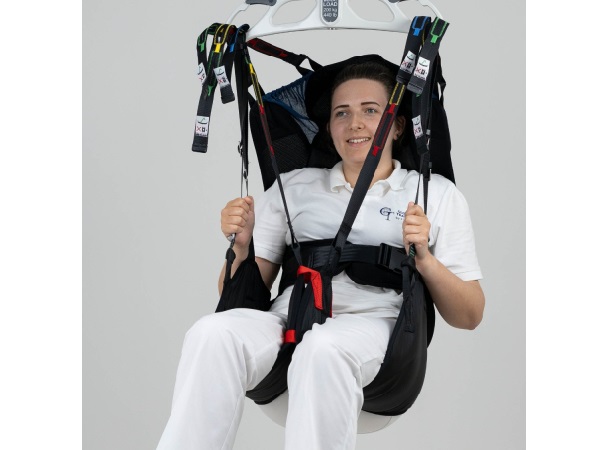
Tinkham slings are supportive slings suitable for people who have difficulty maintaining body control. There is an extra thoracic wrap as well as extra neck and head support.
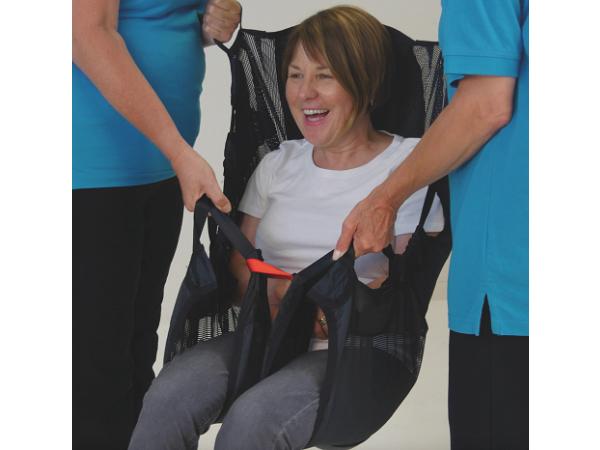
Travel-lite - this easy-to-carry sling folds up into its own bag making it ideal for days out or travelling.
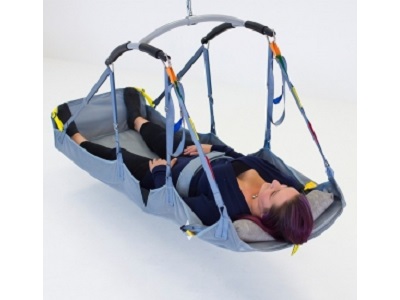
Stretcher slings are designed to be used by patients who need to be fully supine, for instance if they have fixed hip extension, or if flexion a the hips would cause problems with ventilation.
Measuring for Bespoke Sling
We work with experienced sling-specialists, Silvalea, to provide bespoke and customised products.
Some people may need something different from a standard sling. Working in collaboration with healthcare professionals and carers we can provide advice and guidance and then send a technician to carry out a detailed on site assessment, including measurements. Once the clinical assessment is completed we'll contact Silvalea to create a customised solution, with the appropriate shape and size, using the right fabrics for the patient.
Designing a Bespoke Sling
As well as slings to help with transferring patients, a number of other products are available including:
Body Turner
Learn about more about our 'One-Stop' Moving and Handling Solutions: Equipment | Training | Maintenance & Testing
It is essential to choose the right patient hoist sling for the patient's needs and to follow the manufacturer's instructions for safe use. Anyone who uses patient hoist slings needs appropriate training to ensure that the equipment is used safely.
At Fortuna we work in collaboration with industry leading sling specialists Silvalea to provide a comprehensive range of high quality standard and bespoke slings, including paediatric and bariatric slings. Our trained advisors can help you choose the right sling.
This will guide you through sending us the basic information we'll need to advise you on choosing the right sling, or
email us: assist@fortunambach.com
phone us: 020 8805 2020
We stock a wide range of products, with over 1000 lines available in the showroom.
Come and TRY out the products to see what suits your needs.
Our friendly highly-trained staff will help you make a choice which is right for you.
Copyright © 2025 Fortuna Mobility | All rights reserved.